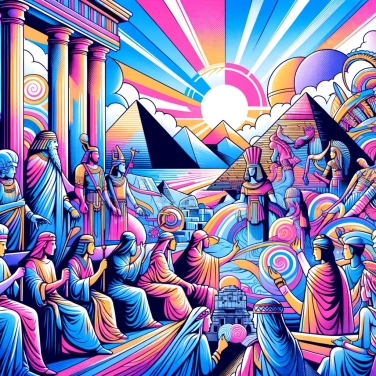The Mayans placed great importance on astronomical cycles in their calendar because these cycles allowed them to predict natural phenomena such as seasons, eclipses, and planetary movements, which were essential for agriculture, religious ceremonies, and political power.

The Mayans closely observed the cycles of celestial bodies such as the sun, the moon, and Venus to determine the most favorable periods for their crops. By following these precise cycles, they were able to anticipate dry or rainy seasons and thus adapt their planting, especially for corn, which was essential to their society. Observing the movement of the stars allowed them to accurately predict the best times for sowing or harvesting, thereby avoiding the risks of famine. In short, knowing the sky was simply a matter of ensuring the survival and food stability of their entire civilization.
The Maya saw in the movements of the sky the direct signs of divine intentions. Observing the stars was essential, as each planet and star represented a deity or a strong symbol linked to their beliefs. For example, the daily path of the Sun symbolized the struggle between the powers of life and death, where its rising represented the daily rebirth of the world by the gods. The complex cycle of Venus was also closely monitored, as it was associated with a major god bearing omens of war or peace. For them, these celestial phenomena indicated the right moments to celebrate religious ceremonies or to make important decisions on Earth. Each astral movement was perceived as a direct conversation between humans and their deities.
Among the Maya, priests and leaders used astronomical observations as evidence of power. Those who could accurately predict an eclipse or rainfall gained significant authority among the people. The control of astronomical knowledge thus conferred a form of political power and social prestige to the ruling elites. They would sometimes build monuments or organize large ceremonies aligned with the movements of the planets or lunar phases, in order to impress the crowds and reinforce their social domination. Essentially, mastering celestial cycles was an effective way to keep their people united, impressed, and submissive.
The Maya had an exceptionally accurate calendar, based on their fine observations of the movement of celestial bodies, particularly the Sun, the Moon, and even Venus. The Maya solar year consisted of 365 days, just like our current calendar, but with a rather original way of managing long cycles. They primarily combined two systems: the Tzolk'in, related to religious matters, with 260 days, and the Haab, which was more solar-oriented, with 365 days. These two calendars advanced side by side, forming a repetitive global cycle of 52 years. To count even broader periods, they used the Long Count, capable of recording their precise dates over thousands of years. Thanks to their meticulous observations of celestial phenomena, they were able to anticipate events such as eclipses or the phases of Venus with impressive accuracy for their time. Their mapping of the sky even allowed them to slightly correct and adjust their calendar to remain perfectly aligned with what they observed in the sky.
Mayan astronomers used the orientation of buildings and temples based on celestial bodies to accurately track astronomical cycles, which explains the remarkable alignment of certain pyramids with the sun during the equinoxes or solstices.
The Maya calendar had not just one, but three different ways of tracking time: the Tzolk'in (260 days), the Haab' (365 days), and the Long Count, used for extended historical periods.
Some Maya codices, ancient manuscripts made on bark paper, contain tables of lunar eclipses that predict these events with remarkable accuracy for several centuries.
The Mayans had precisely identified the cycle of Venus, which is on average 584 days, and used it to determine favorable periods for wars or important ceremonies.
No, contrary to some popular beliefs, the Mayan calendar did not predict the end of the world. The end of a cycle in their calendar simply meant the end of a major time period followed by renewal. The Mayans viewed time as an endless cyclical succession.
The Mayan calendar had a remarkable degree of precision for its time, notably accounting for complex astronomical cycles such as the phases of Venus, lunar and solar eclipses, which it could predict with great accuracy, unlike its European contemporaries.
Yes, Maya astronomical observation was entrusted to specialized and learned priests, whose role extended beyond the religious. They were responsible for meticulously tracking and recording the movement of celestial bodies and keeping their highly complex calendars up to date to guide the decisions of their civilization.
The Maya closely observed celestial movements to determine the best times for planting and harvesting their crops, organizing important religious ceremonies, and predicting significant events in social and political life. These observations directly influenced their survival and social organization.
The Maya primarily used specific observatories such as the Caracol at Chichén Itzá. They also utilized architectural markers, notably temples and pyramids that were meticulously aligned with the cardinal points, the positions of the sun, or certain celestial bodies visible to the naked eye.

No one has answered this quiz yet, be the first!' :-)
Question 1/6